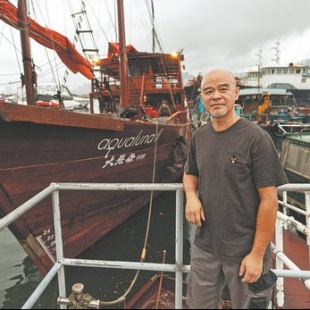Handcrafted red-sail junk glides across a timeless harbor

Hong Kong, surrounded by the sea, grew into a major Asian trading hub, and the bustling waters of Victoria Harbour once sustained a thriving shipbuilding industry.
Kwong Ming Shipyard was established in the 1950s by Au's maternal grandfather and later taken over by his father, Au Wai. Au Sai-kit himself started learning the trade at 13, apprenticing through experience rather than formal lessons.
"I once tried to cut corners on a complex step, only to have to start all over again," Au says. "Building ships is like life: you have to proceed step by step."
The 1980s were the shipyard's heyday. "We had six to seven in-house staff and 30 to 40 hired workers to handle orders," he recalls. The shipyard built 50-60 percent of Hong Kong's commercial vessels, transporting tourists, residents and workers, including the shuttle boats for the renowned Jumbo Kingdom, one of the world's largest floating restaurants.
But fortunes shifted. As lighter ships gained popularity, traditional handcrafted wooden junks, burdened by high material costs, slowly disappeared. The three-generation-old shipyard shifted its focus from building ships to repairing them and cleaning hulls.
Now in his 60s, Au is among Hong Kong's younger master shipbuilders. Crafting a luxury junk, he says, is a labor of love, but "I'll keep going for as long as I can". In recent years, groups have visited the yard, and Au has shared stories of Chinese junk-making, hoping to kindle young people's interest in this traditional craft.
Leading reporters to the shipyard's second floor — his home for 35 years — Au revealed his private "museum", filled with junk models, including a replica of the Aqua Luna I.
"Chinese junks are the most beautiful," Au says, his face lighting up with hope. He dreams of seeing more of these iconic vessels sailing Victoria Harbour, showcasing Hong Kong's enduring craftsmanship to the world.





































